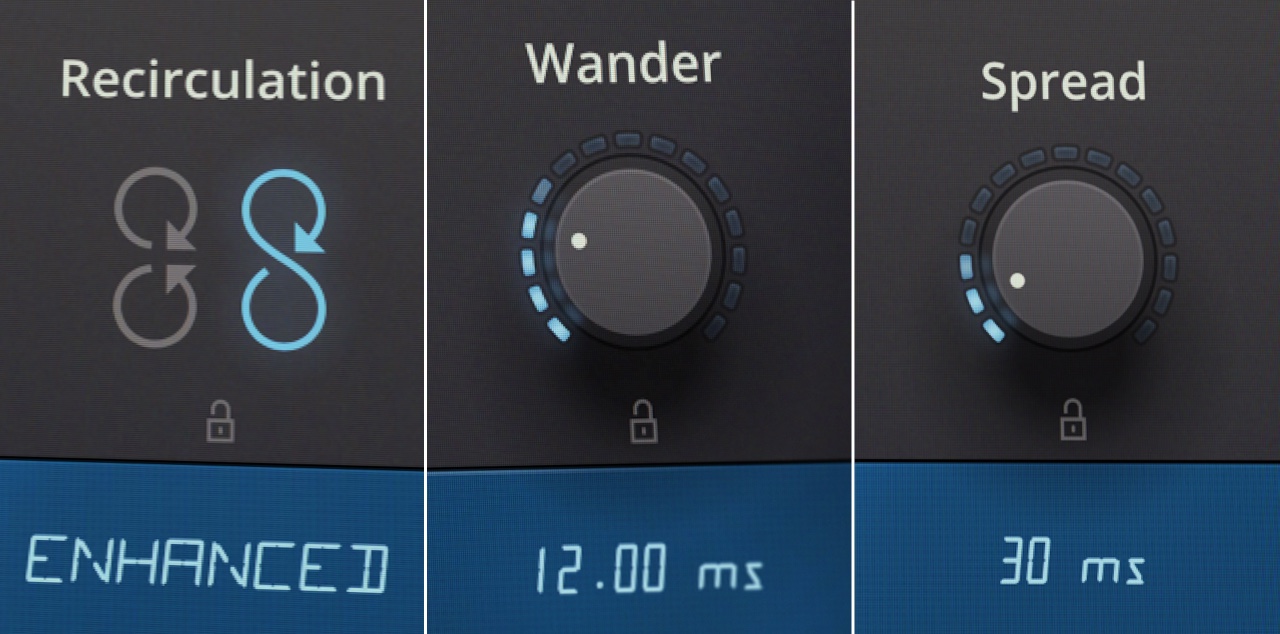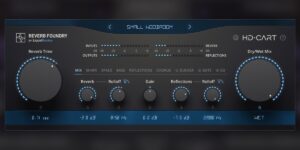
Algorithmic reverbs can sometimes get a bit technical, and it can make them feel a little less approachable than they really need to be.
In this article we’ll decode three of the most cryptic terms you may encounter with classic algorithmic reverb designs taking HD Cart as an example.
You’ll find out a little more about concepts like spin, wander and spread. They’re not very complex and just a little extra knowledge can help you to get the most from a reverb.
Spin & Wander
The classic pair Spin and Wander. Just think of them as Modulation Rate and Modulation Depth.
Spin controls how fast the modulators are running, wander controls how much modulation is applied to elements like delay line reads within the body of the reverb. This causes a type of modulation that does not cause pitch shifting like a chorus would (this is why HD Cart also includes a dedicated reverb chorusing feature).
So if you’re looking for those classic ‘out of this world’ modulated halls that sound dramatically different from one moment to the next a moderate spin and high wander is what you’re after. It can make every beat sound like it is subject to a different reverb structurally with notably different timing on reflections and echoes within the body of the space – no two moments sound alike as the modulation is so heavily randomised! Perfect for 80s power ballad vocals and enormous creative spaces in post.
For something more realistic or subtle pull back the wander to a few milliseconds and pick a fairly low spin value. This helps to keep the room sounding alive without drawing attention to the modulation, whilst lowering the chance of the ear picking up on any repetition or resonances within the algorithm itself. For the more intricate reverbs needed by classical instruments it’s best to take care with the controls here to avoid the reverb becoming too unnatural but don’t forget about them entirely as they are key to maintaining liveliness and a sense of momentum within the space.
For special effects crank them both up high as you can get away with!
Spread & Size
While the reverb time control is the most simple way to change how large a space sounds, Spread and Size give you a finer degree of control over how big you will perceive a reverberant environment to be.
Size simply controls the length of the reverb loop and time between the reflection taps so it is quite easy to choose a suitable value here for tighter or more open spaces by ear, but Spread is a bit more subtle. Think of it like a lot of pre-delays that you can use to spread out the onset of the reverb, like a synth’s envelope attack control.
Increasing the spread value will make a room sound as if it has a larger volume because the reflections take longer to build up. It pushes back the peak of the reverb without creating a time delay before it as a pre-delay would. Since spread and size both play a role in where the audio injection and pick-up points are in the delay loop, it becomes quite important to get a feel for the interplay between these two controls in context of the rhythm of the piece so some experimentation here is always beneficial.
So if you need a large but fairly tight space pick a large size and small spread, but if you want it to bloom more slowly like a complex cathedral or hall then dial up the spread and you’ll hear the echos build up more gradually. As is the case with pre-delay, intelligibility of vocal phrases can increase if the verb is pushed away from the dry and reflections a little bit – spread can be an effective way to do this in a more subtle way than using a pre-delay.
Recirculation & Loop Enhancement
Reverbs are made of one or more feedback loops that audio circulates around hitting filters and attenuators along the way. The more memory available in a reverb delay loop, and the more times you read from it, the better it tends to sound.
HD Cart’s algorithm is special in that it was the only one ever to take advantage of both of the dual-boards in the legendary hardware on which it is modelled – so that’s twice the memory (and twice the processing) that was ever available to any of the other algorithms. You can hear the difference in that a Higher Density reverb was achieved.
But the catch was that as shipped, the two boards only ever ran in parallel. Whether by design or not, it was impossible to resist adding a little extension – HD Cart allows you to flick a switch and route reverb between the ‘boards’, doubling the length of the reverb loop and making it sound much more open and spacious than the original ever did! You can engage this mode using the Enhanced Recirculation mode on the Space tab.
Maybe it was meant to sound this way, maybe it wasn’t, but it sure sounds good!
Try It Out For Yourself
If you’d like to dig a little deeper into the vintage algorithmic reverb design bliss that HD Cart has to offer, or even if you just enjoy rifling through some classic presets, the best way is with a 14-day trial. Just head to the demos page for a code to drop into your iLok license manager then pick up an installer from the downloads page.
Existing customer can use their loyalty discounts for some incredible stackable savings.

